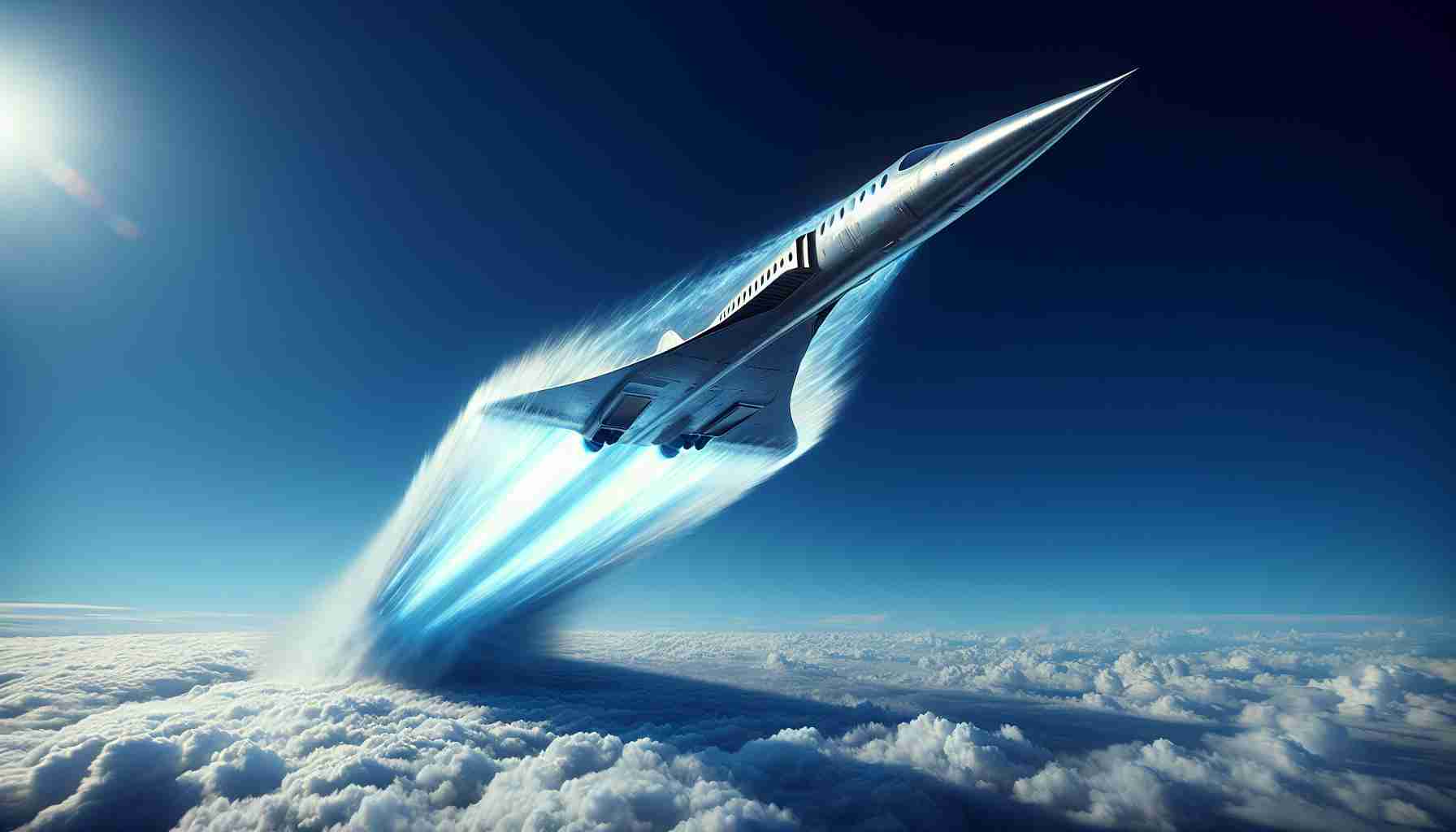- The XB-1 achieved a speed of Mach 1.05, marking a significant milestone in aviation.
- This aircraft is the first privately developed supersonic jet to break the sound barrier.
- Plans for the Overture passenger aircraft aim to reduce travel time from the U.S. East Coast to Europe to just 3.5 hours.
- Sustainability is a key focus, with plans for the Overture to operate on 100% eco-friendly fuel.
- Collaborations between NASA and private companies indicate a promising future for faster and greener air travel.
The skies roared as the XB-1, an innovative experimental aircraft from Boom Supersonic, rocketed past the sound barrier, reaching an exhilarating speed of Mach 1.05 during a thrilling test flight on January 28. Launched from the Mojave Air & Space Port in California, this groundbreaking flight marks a pivotal moment in aviation history.
As the XB-1 ascended to an impressive altitude of over 35,000 feet, it achieved this extraordinary speed just minutes after takeoff, igniting hopes for a new era of commercial supersonic travel. Boom Supersonic’s vision, to revive high-speed journeys that once captivated the world, takes a remarkable leap forward with this test.
Unlike previous supersonic endeavors primarily managed by governments and militaries, the XB-1 stands out as the first privately developed supersonic jet to break the sound barrier. With the promising goal of launching the Overture, a passenger aircraft designed to whisk travelers from the U.S. East Coast to Europe in just 3.5 hours, Boom is reshaping how we view air travel.
This leap into the future is not just about speed; it emphasizes sustainability as well. Boom plans to run the Overture on up to 100 percent sustainable fuel derived from eco-friendly sources, presenting a greener alternative for air travel.
As the aviation landscape evolves, exciting partnerships, like those between NASA and private innovators, signal a future where faster, quieter, and greener flying becomes the norm. With the return of supersonic travel on the horizon, the world prepares for a thrilling new chapter in the skies!
Breaking Barriers: The Future of Supersonic Travel is Here!
The XB-1 Supersonic Jet: A Game Changer in Aviation
On January 28, the XB-1, an experimental aircraft developed by Boom Supersonic, made history by surpassing the sound barrier at a speed of Mach 1.05. This groundbreaking test flight took place at the Mojave Air & Space Port in California, marking a significant milestone in the quest for commercial supersonic travel.
The success of the XB-1 signals a resurgence of interest in high-speed air travel that echoes the golden age of aviation, but with modern advancements in technology and sustainability in mind. With plans for a commercial supersonic passenger aircraft named Overture, Boom Supersonic aims to significantly reduce flight times between major cities. For instance, flights from the U.S. East Coast to Europe could be completed in just 3.5 hours.
Innovations and Features of the XB-1
The XB-1, often referred to as the “Baby Boom,” showcases several key innovations that set it apart from previous supersonic jets:
– Sustainable Aviation Fuel (SAF): Designed to operate on up to 100% sustainable fuel, the Overture aims to reduce the carbon footprint of air travel significantly.
– Noise Reduction Technology: The XB-1 incorporates advanced engineering techniques that reduce the sonic boom effect, addressing one of the main concerns regarding supersonic flight over populated areas.
– Cutting-edge Design: The jet features a sleek design prioritizing aerodynamics, which enhances performance and efficiency.
Market Forecasts and Trends
The market for supersonic travel is poised for growth, driven by an increasing demand for faster travel options. Industry forecasts suggest that if the Overture successfully enters service, it could lead to a new segment within the aviation market, appealing particularly to business travelers and affluent customers seeking to save time. The return of supersonic flights is also expected to spur competition among airlines, driving further innovation and investment in this segment.
Important Questions Addressed
1. What are the expected benefits of the XB-1 and Overture for travelers?
– The XB-1 and upcoming Overture are set to revolutionize air travel by drastically reducing flight times, making long-haul flights more accessible and less time-consuming for travelers. Additionally, the focus on sustainable fuel could appeal to environmentally conscious passengers.
2. How does Boom Supersonic plan to mitigate the environmental impacts of faster flights?
– Boom Supersonic is committed to operating Overture on up to 100% sustainable aviation fuel, which is derived from eco-friendly sources. This approach aims to minimize the environmental impact associated with traditional jet fuel, presenting a greener approach to air travel.
3. What role does government and private sector collaboration play in the future of supersonic travel?
– Partnerships between government agencies like NASA and private firms like Boom Supersonic are crucial. They foster innovation in aviation technologies, improve regulatory frameworks, and promote research into sustainable practices, which collectively support the safe and responsible return of supersonic travel.
For more information on the future of aviation, visit Boom Supersonic and explore their vision for the Overture supersonic passenger jet.
